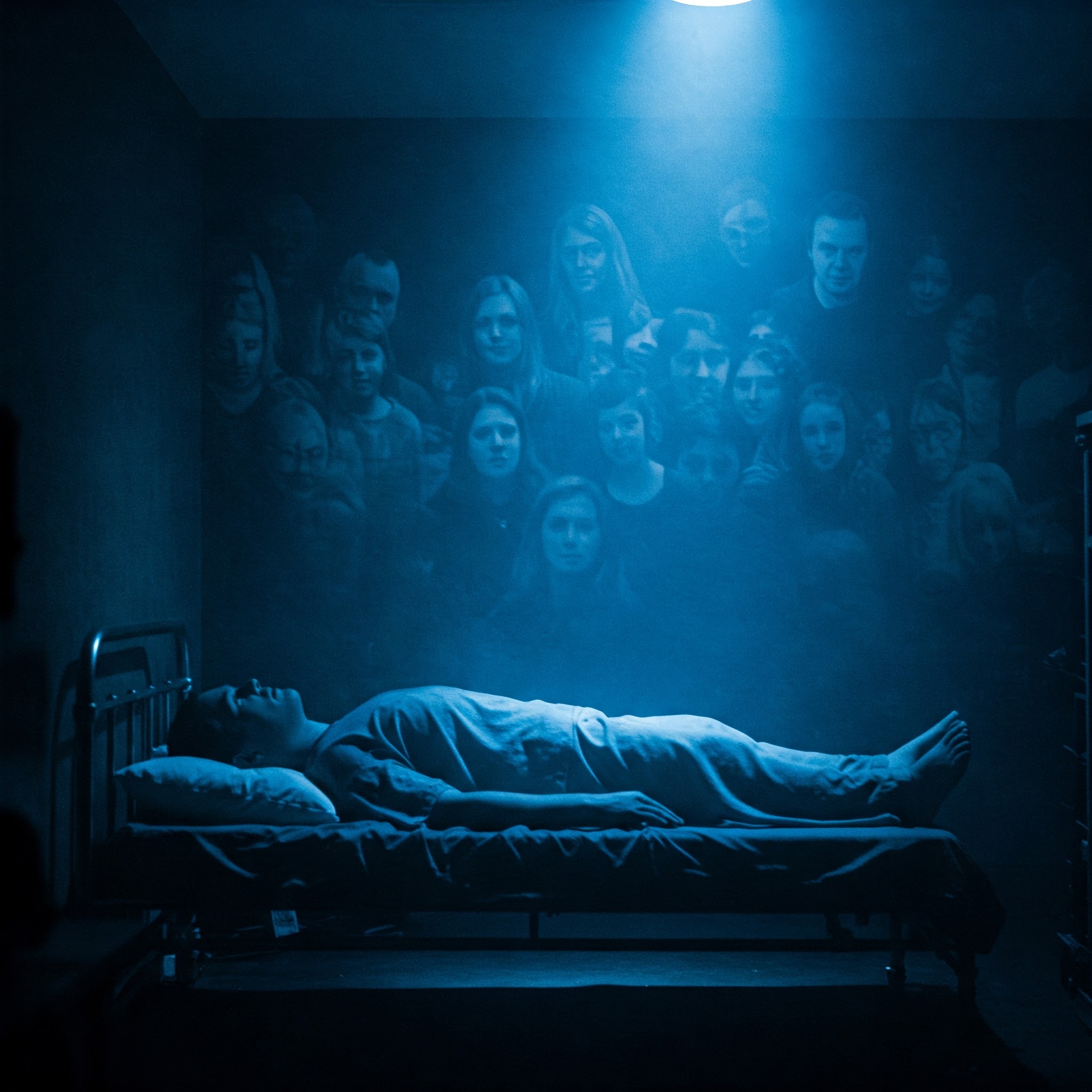Introduction: The Fascination with the Final Moments
Death is one of life’s greatest mysteries, sparking curiosity and philosophical debates across time and cultures. Among the many theories and speculations, one intriguing idea has emerged: that when a person dies, they have 7 minutes of conscious activity remaining. This concept, often romanticized in films and literature, raises fascinating questions about what actually occurs during those final moments of existence.
The notion of “when a person dies, they have 7 minutes” has captivated the imagination of not just the general public, but also scientists, doctors, and spiritual leaders. Is this simply a myth rooted in storytelling, or does science have explanations for what occurs in the mind after the heart stops beating? The mystery surrounding these last moments has only deepened with advances in medical research and studies of near-death experiences.
In this article, we delve deep into what really happens when a person dies, they have 7 minutes of remaining mental activity, according to speculation. We’ll explore the origins of the “when a person dies, they have 7 minutes” theory, examine what science reveals about brain activity post-death, and look at how various cultures and religions interpret this profound phase. With a balanced lens of scientific evidence and spiritual perspectives, we aim to uncover the truths and myths behind this enigmatic timeframe that suggests that when a person dies, they have 7 minutes to experience something incredible.
The Origin of the ‘7 Minutes After Death’ Theory
The idea that when a person dies, they have 7 minutes of remaining thought and experience did not emerge from a scientific journal but rather from a blend of anecdotal reports, philosophical thought, and creative storytelling. Popular media has contributed heavily to this theory. Films, books, and urban legends often portray a person reliving their entire life in a matter of minutes, suggesting the brain rapidly processes memories in a final farewell during that short time when a person dies, they have 7 minutes of reflection.
Though lacking scientific origin, the theory gained momentum as people began sharing near-death experiences. Individuals who were temporarily declared clinically dead have reported vivid experiences, including tunnels of light, reunions with deceased loved ones, and a profound sense of peace. These accounts, while subjective, have sparked interest in whether consciousness might continue briefly after bodily death. Such stories support the idea that when a person dies, they have 7 minutes to possibly undergo a powerful inner journey.
This idea also ties closely to the hypothesis that during intense moments, such as death, the brain might function at an accelerated rate due to a surge of neurochemicals. One such chemical, dimethyltryptamine (DMT), is naturally produced in the brain and is believed by some researchers to contribute to intense, dream-like visions during near-death states. While still speculative, this theory suggests that what feels like minutes in a dying brain may be experienced in mere seconds in real time, giving the illusion that when a person dies, they have 7 minutes of vivid awareness.
What Science Says Happens After Death
The Moment of Death: What Clinically Defines It?
From a medical standpoint, death is often declared when the heart stops beating and breathing ceases. This moment is referred to as clinical death. However, this does not mean that all bodily functions immediately stop. There is a short window where some biological activities, especially in the brain, may still be occurring. And this is where the idea that when a person dies, they have 7 minutes comes into play, as these fleeting biological responses could sustain a flicker of awareness.
Clinicians typically monitor for signs of life such as pulse, pupil reaction, and electrical activity in the brain. In some cases, these signs can persist briefly even after apparent death. This raises the question: when does death truly begin? Technically, true biological death is considered to occur when the brain no longer functions, and resuscitation is no longer possible. During this window of uncertainty, the theory that when a person dies, they have 7 minutes may find its biological footing.
Brain Activity After Cardiac Arrest
Recent studies have shown that brain activity can persist for several minutes after the heart has stopped beating. In 2013, researchers recorded brain activity in rats after cardiac arrest and found a sudden burst of high-frequency brainwaves, resembling those seen in conscious states. Similar patterns have been observed in human subjects, suggesting the brain may remain “aware” momentarily after clinical death—perhaps lending truth to the belief that when a person dies, they have 7 minutes of inner consciousness.
This phenomenon is known as a “death surge” and has intrigued neuroscientists. Some speculate that this activity could explain the vivid imagery reported in near-death experiences. However, there is no conclusive evidence that this brief surge equates to consciousness as we understand it. It’s more likely that the brain is reacting to trauma with a flood of electrical impulses before it completely shuts down—but this still leaves open the possibility that when a person dies, they have 7 minutes of electrical echoes that mimic thought.
Cellular and Neurological Changes in the First 7 Minutes
The human body is a network of cells that rely on oxygen to function. When the heart stops, oxygen supply to the brain ceases. Neurons begin to die within minutes due to lack of oxygen and energy. However, not all brain cells die simultaneously; some can survive for a short period, depending on various factors such as temperature and environment. This overlap aligns with the belief that when a person dies, they have 7 minutes of potential cognitive residue.
During these minutes, cells enter a process called apoptosis or programmed cell death. Scientists are studying this stage to better understand how the body shuts down and whether there is a brief window for potential revival. In fact, cases of resuscitation after prolonged cardiac arrest have occurred, particularly when the brain was cooled rapidly, slowing down cellular degradation. These discoveries continue to inspire research and public intrigue in the theory that when a person dies, they have 7 minutes where the body and brain undergo a dramatic biological transition.
The Philosophical and Spiritual Interpretations
Near-Death Experiences (NDEs) and the ‘Life Review’
One of the most commonly reported features of near-death experiences is the “life review,” where individuals claim to see their entire lives flash before their eyes. This phenomenon, while often dramatized, holds psychological intrigue. Experts suggest this could be the brain’s last attempt to make sense of life events as neurons fire chaotically. These life reviews strongly correlate with the idea that when a person dies, they have 7 minutes to relive and reflect.
Some spiritual interpretations view this as the soul preparing to leave the body. The detailed and emotional nature of these memories, even in a brief timeframe, supports the idea that the brain could be scanning important events as a final act. Whether rooted in neuroscience or spirituality, the consistency of these experiences across cultures points to a deeply human response to death. Stories and beliefs across centuries echo that when a person dies, they have 7 minutes that may represent the soul’s transition phase.
Religious and Cultural Beliefs on the Moment of Death
Different religions have their own perspectives on what happens when a person dies. In Christianity, the soul is believed to leave the body and face judgment. Hinduism and Buddhism suggest the soul may linger briefly before beginning the cycle of reincarnation. Islamic beliefs also support a transition period where the soul remains near the body. Many of these interpretations imply that when a person dies, they have 7 minutes or a short window of awareness and spiritual shift.
These beliefs often align with the idea of a short window after death when the soul is aware or in transition. The “seven minutes” could metaphorically represent this spiritual passage. Although science cannot measure the soul, cultural rituals and spiritual accounts continue to give weight to the significance of this period. Thus, both science and spirituality find common ground in the theory that when a person dies, they have 7 minutes of profound significance.
The 7 Minutes Theory in Popular Culture and Media

The mystery surrounding the moments after death has not gone unnoticed in storytelling. Films such as Flatliners and The Lazarus Effect dramatize what might happen if a person could return from the dead with memories of the afterlife. Books and online forums are filled with accounts and theories exploring what may occur during these elusive minutes. Many stories base their plotlines on the compelling idea that when a person dies, they have 7 minutes to experience something extraordinary.
This portrayal in media has popularized the “7 minutes after death” theory, influencing public perception. While these depictions are often exaggerated, they reflect our collective curiosity about death and what lies beyond. Whether through fictional characters or real-life anecdotes, this theme taps into deep human fears and hopes. The phrase “when a person dies, they have 7 minutes” has become a cultural motif, blending mystery, science, and spirituality.
Conclusion: Mystery Meets Science
While the “7 minutes after death” theory remains speculative, it bridges the gap between science and spirituality. Scientific studies confirm that the brain doesn’t shut down immediately, and electrical activity can persist for several minutes. Meanwhile, spiritual traditions and personal experiences offer a more introspective, emotional layer to this phenomenon. Together, they support the provocative idea that when a person dies, they have 7 minutes of something remarkable occurring inside them.
Whether it’s a neurological response or the soul’s transition, those final moments after death continue to captivate human imagination. The mystery is far from solved, but with advancing technology and open-minded exploration, we may inch closer to understanding the truth behind what happens when a person dies, they have 7 minutes left that may be the most profound of all.
FAQs: Understanding the 7 Minutes After Death
Q1: Is there scientific proof of the brain staying active after death?
Yes, studies in animals and humans show brief bursts of brain activity after cardiac arrest, supporting the idea that when a person dies, they have 7 minutes of continued neurological function.
Q2: What causes the life review in near-death experiences?
Theories suggest a surge in brain activity, neurochemicals, or the brain processing memories rapidly under stress, possibly explaining why when a person dies, they have 7 minutes of vivid recollection.
Q3: Can someone really be revived after being clinically dead for 7 minutes?
Yes, with proper medical intervention, especially using techniques like hypothermia, revival is possible in some cases, aligning with the idea that when a person dies, they have 7 minutes to potentially come back.
Q4: Do all cultures believe in the soul lingering after death?
Many religions and cultures have beliefs that the soul stays near the body briefly, often within a timeframe that suggests when a person dies, they have 7 minutes of spiritual transition.
Q5: What role does DMT play in near-death experiences?
Some researchers hypothesize that DMT released in the brain could be responsible for vivid, dream-like experiences at death, giving scientific context to the belief that when a person dies, they have 7 minutes of consciousness.







